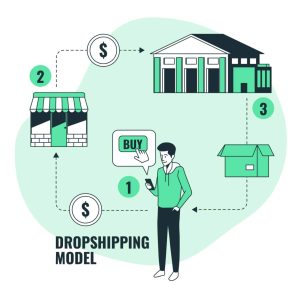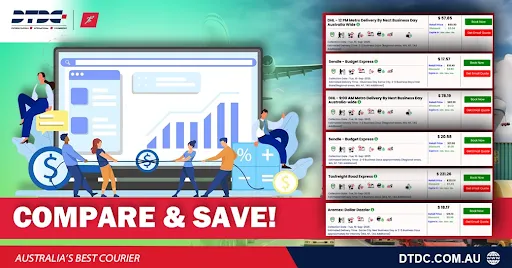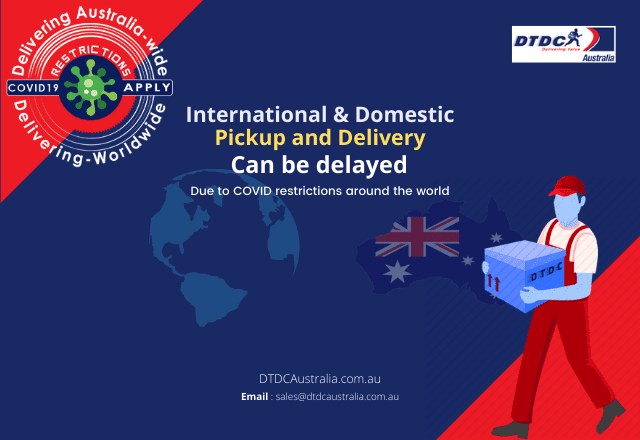Introduction
Access the global market easily with lower investment costs and run your business online without needing to invest in warehousing or inventory. Yes, today, dropshipping in Australia has earned nationwide approval as a cost-effective way to create and grow your online business. And if you are an aspiring entrepreneur and are taking the first step towards it, then this is how you can have a safe start. But what exactly is this dropshipping business and how can you make it profitable for you? Well, here’s the expert…
What Is Dropshipping?

Dropshipping is a futuristic way to do business. With this e-commerce business model, one can easily sell their products online and does not need to hold any inventory or create a warehouse for storage. Instead, the items are purchased from another third-party supplier, and he is the one who ships the products to the customers. This becomes beneficial as you can easily run an online store and no longer need a storage location.
How Dropshipping Business Model Work in Australia?

The dropshipping business model in Australia operates by allowing entrepreneurs to sell products to customers without holding any inventory. Instead of purchasing and storing goods upfront, you partner with suppliers who handle the storage, packing, and shipping directly to your customers. When a customer makes a purchase, the order is forwarded to the supplier, who ships the product on your behalf. This model minimizes upfront investment and operational costs, making it ideal for those looking to start an online store without the need for warehouse management. For success in Australia’s competitive market, focusing on finding reliable suppliers, optimizing product listings, and ensuring a seamless customer experience is key.
Is Dropshipping Legal In Australia?
When a business idea is good, you may first wonder if it is legal to practice. That is why there have been numerous queries like, Is dropshipping legal in Australia?
You can be stress-free as dropshipping is definitely legal in Australia, and you can start the business without concerns.
However, it is also important to understand that one must comply with Australian Consumer Laws, the GDPR rules, and, of course, the Competition and Consumer Act.
There are certain products you mustn’t dropship (Prohibited Items for any Australian retailer, manufacturer or wholesaler.
How to Start a Dropshipping Business in Australia? Step-by-Step Guide
If you are now inspired to start your own dropshipping business in Australia, then prior to that, you must definitely go through this detailed step-by-step guide.
1. The Ideal Niche Selection
When you question yourself, is dropshipping worth it in Australia? You must consider a particular niche you have in mind and then look for an answer. To decide the products you will be dealing with, you need to do a detailed analysis of the current market trends and demands. This will help you choose an ideal product idea with lower market competition and a higher demand.
2. Choosing The Right Supplier
After choosing the right niche, it is also significant to select trustworthy dropshipping suppliers in Australia. For this, a person needs to look for reputable companies that provide customers with reliable, high-quality products and have an efficient shipping service.
3. Shipment and Logistics Handling
The key to successful logistics handling is to ensure that the orders are efficiently fulfilled and timely delivered. During this, you might have this query in mind- do I need an ABN for dropshipping in Australia? Well, yes, you do need an Australian Business Number for both legitimacy and tax compliance.
4. Business Registration
Once you set up your business, you do not want it to face hurdles immediately. You may ensure this by legally registering your business. If you have a specific business niche, then also look up if you need an additional license for business. The best dropshipping suppliers in Australia would definitely want to work with a well-registered business.
5. Choose the Right Platform
The various platforms to help an online business grow include Shopify, WooCommerce, BigCommerce, Wix, and more. How a platform works and what tools you can get access to, all depend on the platform you choose, so make your decision accordingly.
6. Strategise Your Marketing
One of the best ways to grow your business is through successful marketing that reaches out to the right audience. And these successful marketing techniques include social media marketing, email marketing, marketing via Google Ads, SEO, etc. So, if you ever wonder, does dropshipping work in Australia? Remember that it all depends on how strategically you do your business marketing.
7. A Helpful Customer Support
The Customer Service team of your business is equally important as any other section, as it can make or break your business plan. To perfectly manage a dropshipping business in Australia, you need a well-qualified team to handle all customer queries and other requirements.
Why Start a Dropshipping Business in Australia?

Dropshipping is profitable, but does it actually work in Australia? Before initiating an online business, one might have this query. To ease your mind, understand that the country offers a reputable e-commerce market and reliable shipping services like DTDC Australia itself.
1. Low Startup Costs: Dropshipping provides entrepreneurs with one major benefit because it demands minimal costs to begin operating. Through dropshipping operations you avoid bearing any expenses for inventory management and warehouse needs or shipping matters. The minimal need for capital at start-up allows you to launch your dropshipping business easier with reduced first-time investments. You can acquire products only when you finalize sales which reduces your investment risk so you can direct your efforts toward creating an ever-growing online business.
2. Australia’s Thriving E-commerce Market: The Australian e-commerce sector continues to expand rapidly because analysts predict it will reach $42 billion by 2025. Online shopping growth among Australians creates excellent prospects for dropshipping commercial ventures. Dropshipping entrepreneurs can target this market because Australia has a growing number of tech-hungry consumers who increasingly prefer online shopping for a range of products.
3. Flexibility and Scalability: Dropshipping offers unparalleled flexibility. Your own business becomes operable through any place you choose to work in including your home or during outdoor travel. The process of business growth becomes less complicated when your operations scale up. Your dropshipping business allows easy expansion through new product lines and specialized niches since inventory management remains unnecessary. Dropshipping proves suitable for both novice and experienced business owners because it features flexibility and scalability.
4. Simplified Shipping Process: Under dropshipping you no longer must perform the duties of packaging or shipping products. Your suppliers operate a complete order fulfillment network starting from package production until delivering goods directly to end customers. Starting business with Australian suppliers can decrease shipping expenses and response times which creates advantages for market competition alongside better customer satisfaction. 5. Testable Business Model Using the dropshipping business model lets you start low-cost operations so you can try various products alongside strategic methods before making complete investments. Your operation can shift between products and marketing approaches because you do not need to incur substantial stock investments. The adjustable nature of your business strategy enables you to develop your approach without incurring major financial losses.
Real user tip: It’s going good. But would be wary of how much you are paying for it and why they are selling.
Also would not buy unless you can add significant value to it and increase sales. Eg. You’re an e-commerce or AdWords wiz.
Source: [Link to the Reddit discussion]
Costs to Consider in Australian Dropshipping Business
If you are trying to learn how to do dropshipping in Australia, you also need to understand these various cost factors.
1. Platform Fees:
An online marketplace or platform, such as Shopify or WooCommerce, charges a monthly fee for its services. Compare these platforms by considering their tools, services, and fees to choose the one that best meets your needs.
2. Supplier Costs:
The supplier cost also varies with the business niche you have chosen. Narrow down the dropshipping suppliers in Australia according to your chosen niche, and then select the one that fits your budget.
3. The Costs Of Marketing:
Marketing is the customer attracter, so you need to invest in business marketing via social media or other platforms. Take help from experts and witness your business grow and reach its potential.
4. The Costs Of Shipment:
The cost of shipping must also be considered for your dropshipping business. The total time of delivery and shipment charges must be compared and then selected accordingly.
Is Dropshipping Worth It in Australia?

After learning about Dropshipping, you would also want to know if this business is actually worth it in Australia. Let us discuss some pros and cons of the same, and you can draw the conclusion.
Dropshipping presents profitable business potential in Australia because the e-commerce sector keeps expanding toward predicted $42 billion revenues by 2025. Becoming a dropshipping entrepreneur allows beginners to start their business at a low cost while minimizing their financial vulnerability. The business model of dropshipping comes with multiple hurdles that businesses must face. The Australian market continues to be extremely competitive while customers expect top-notch service alongside swift shipping deliveries. Successful dropshipping operations require businesses to establish unique branding and strong customer service and effective marketing strategies to gain market differentiation. Operating with local suppliers assists customers in obtaining faster delivery times for their orders. Dropshipping has potential to produce profits in Australia when businesses execute proper management of their operations using marketing strategies that target specific audiences.
Dropshipping in Australia: Pros & Cons
Dropshipping Australia Pros:
Lower Startup Costs:
With dropshipping operations in Australia business owners need to invest lower amounts of capital than regular retail businesses require. Accepting dropshipping operations requires minimal financial risk since you neither need to spend on inventory at launch nor deal with warehouse storage requirements. New business owners interested in testing the market against a minimal financial investment should choose a dropshipping model.
No Inventory Management:
The main advantage of dropshipping is its feature that allows business owners to disregard inventory management responsibilities. The supplier maintains storage facilities and executes order processes accompanied by direct shipping to customers. Running a dropshipping business lets you free your time from inventory tracking and inventory waste management which provides extra hours to build your business through marketing.
Flexibility:
The dropshipping business model provides high flexibility to its owners. Your business operates without limitations since an internet connection gives you the freedom to run it anywhere in the world including locations inside and outside Australia. The dropshipping model lets you browse and sell different products with freedom to match market shifts and customer preferences by avoiding large product orders.
Dropshipping Australia Cons:
Thin Profit Margins:
Businesses that employ the dropshipping model can begin without extensive startup expenses but they need to accept reduced profit margins. Ein dropshipping business carries thin profit margins throughout the distribution process from wholesale purchases to retail sales with additional expenditures on advertising spending and supplier costs and transaction expenses. Making significant profits requires you to reach high levels of sales volume.
Dependency on Third-Party Suppliers:
A dropshipping business depends totally on third-party suppliers because the suppliers manage inventory while ensuring product quality through timely delivery. Your customers will experience negative impacts because of supplier delays that cause inventory shortages and shipping errors affecting both your client satisfaction and company reputation. A dropshipping business faces major problems when supply chain control is impossible because unreliable suppliers exist.
Customer Support Challenges:
Not managing fulfillment services or inventory yourself creates difficulties when handling customer problems in a dropshipping operation. Your customers will need resolution on their product problems and delays and damaged merchandise although you do not operate the fulfillment services yourself. The duty to deliver premium customer support becomes essential yet consuming and demanding during supplier-based issue outbreaks.
Realistic Income Expectations:
Your realistic income expectations and business success greatly depend on your marketing efforts, the niche of business you selected, and the reliability of the supplier.
Potential Challenges and How to Overcome Them
With business growth, you attract many customers, but you also attract many challenges that act as hurdles in your business. Common challenges that you may face are delays by the supplier, competition in the niche you chose, etc. This could be overcome by choosing a reliable supplier for you, and to handle the customers, an experienced Customer Support team will work best.
Australian Dropshipping Market Suppliers in Australia
Here are some reliable dropshipping suppliers in Australia:
-
SaleHoo
A trusted directory with over 8,000 verified suppliers worldwide, including Australia. It offers a wide range of products and supplier research tools. - Podbase
One of the best providers of custom tech accessories, Podbase offers fast fulfillment, reliable integrations, and a wide selection of customizable products like phone cases and laptop sleeves. -
AliExpress
Popular for affordable products, AliExpress ships to Australia with options for ePacket shipping to reduce delivery times. -
Zendrop
Focuses on high-quality products and fast shipping to Australia, with automated order fulfillment and branded invoicing. -
CJ Dropshipping
Offers warehouses in Australia for faster shipping, product sourcing, and order fulfillment, integrating easily with Shopify and WooCommerce. -
Spocket
Connects with suppliers in Australia and globally, providing high-quality products with fast fulfillment times. -
Banggood
Known for a wide range of products and warehouses in Australia, ensuring fast shipping and reliable customer support.
Conclusion
If you are about to start your dropshipping business in Australia, consider all these pros and cons and then decide for yourself. Before that, also search for a reliable shipping partner and supplier, and examine whether the niche that you have chosen for your business will actually work in the area. Follow these procedures and taste the success of your business.
Frequently Asked Questions
Is Dropshipping Legal in Australia?
Yes, as long as you comply with Australian business laws and tax regulations.
Is Dropshipping Still Profitable in Australia?
Yes, but success depends on niche selection, marketing, and supplier reliability.
Can I Start Dropshipping with $100?
It is possible, but a budget of at least $500 is recommended for better results.
How Do I Start Dropshipping in Australia?
Follow the steps outlined above, from niche selection to marketing.
How Do You Register a Dropshipping Business?
Apply for an ABN, register a business name, and comply with tax laws.
Do You Have to Pay Taxes on Dropshipping in Australia? What Taxes Do You Need to Pay?
Yes, you must pay GST and income tax based on your earnings.
How Do Dropshipping Suppliers’ Contracts Work?
Contracts outline product pricing, shipping policies, and return conditions.
-
Riya Sharma
Riya Sharma is a passionate writer at DTDC Australia, delivering insightful content on logistics, shipping solutions, and industry trends. With a knack for simplifying complex topics, she keeps readers informed and engaged.
View all posts













